Abstract
ABSTRACT Audiometric records of 449 male manual steelworkers were reviewed to see whether the hearing of men with high initial threshold levels deteriorated more rapidly than that of those men with more normal thresholds when exposed to similar noise levels. Subjects were between 15 and 54 years old at the time of initial examination, and had a repeat audiogram 6-8 years later. They were classified into three occupational noise exposure groups: below 90 dB(A), 90-99 dB(A), and 100 dB(A) or over, without knowledge of their audiometric threshold levels, age, or aural history. Measurements at 0·5, 1, 2, 3, 4 and 6 kHz for the right ear were considered, first as the mean for all six frequencies, then for 0·5, 1 and 2 kHz only, and finally for 6 kHz only. After standardisation for age, it was found that those in the high initial threshold groups deteriorated no faster than the remainder of the series. At the 90-99 dB(A) noise exposure level, χ2 tests showed that the differences between the groups, in terms of mean measured hearing loss, were not significant at the 0·05 probability level. The age-standardised mean threshold shifts for the 0·5-6 kHz range of frequencies over the seven-year review period were 7·5, 8·7 and 7·1 dB at a noise exposure level of 100 dB(A) or more, for workers with an initial threshold level of <12 dB, 12-26 dB and > 26 dB respectively; for those exposed to noise of 90-99 dB(A) the corresponding mean shifts were 7·8, 6·8 and 7·3 dB respectively; while for those exposed to noise of less than 90 dB(A) the mean shifts were 6·2, 5·0 and 5·2 dB respectively.
Full text
PDF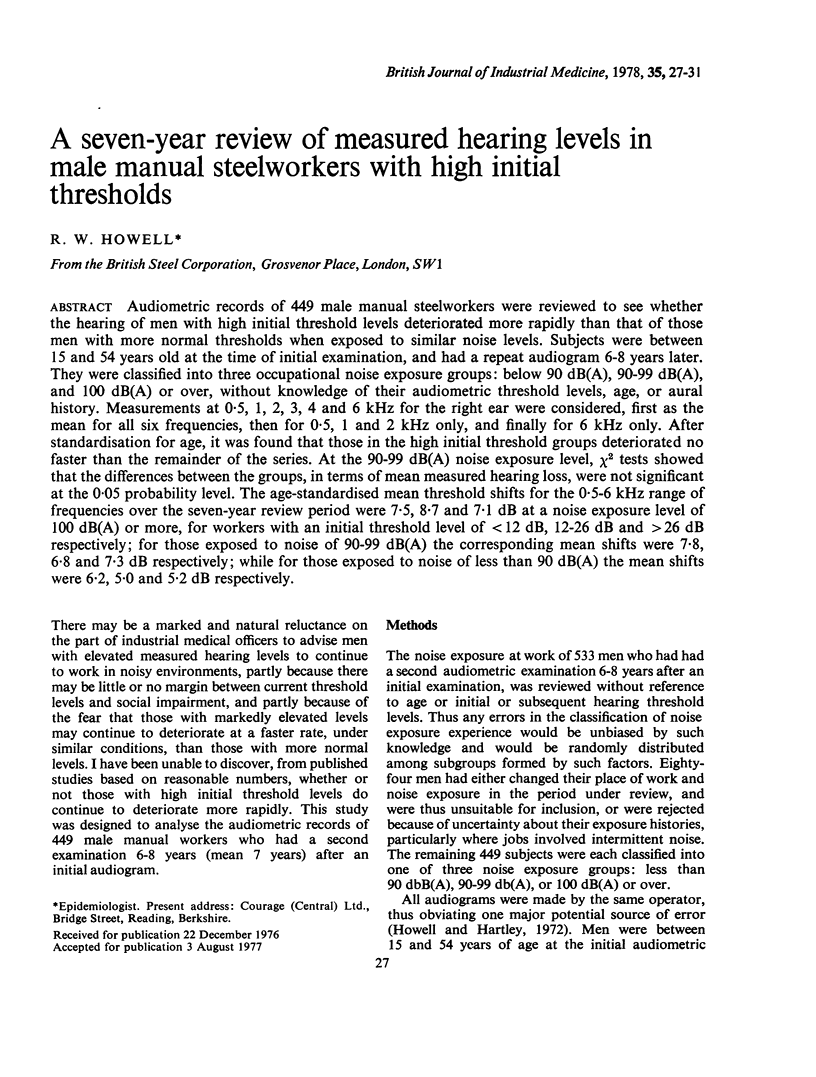
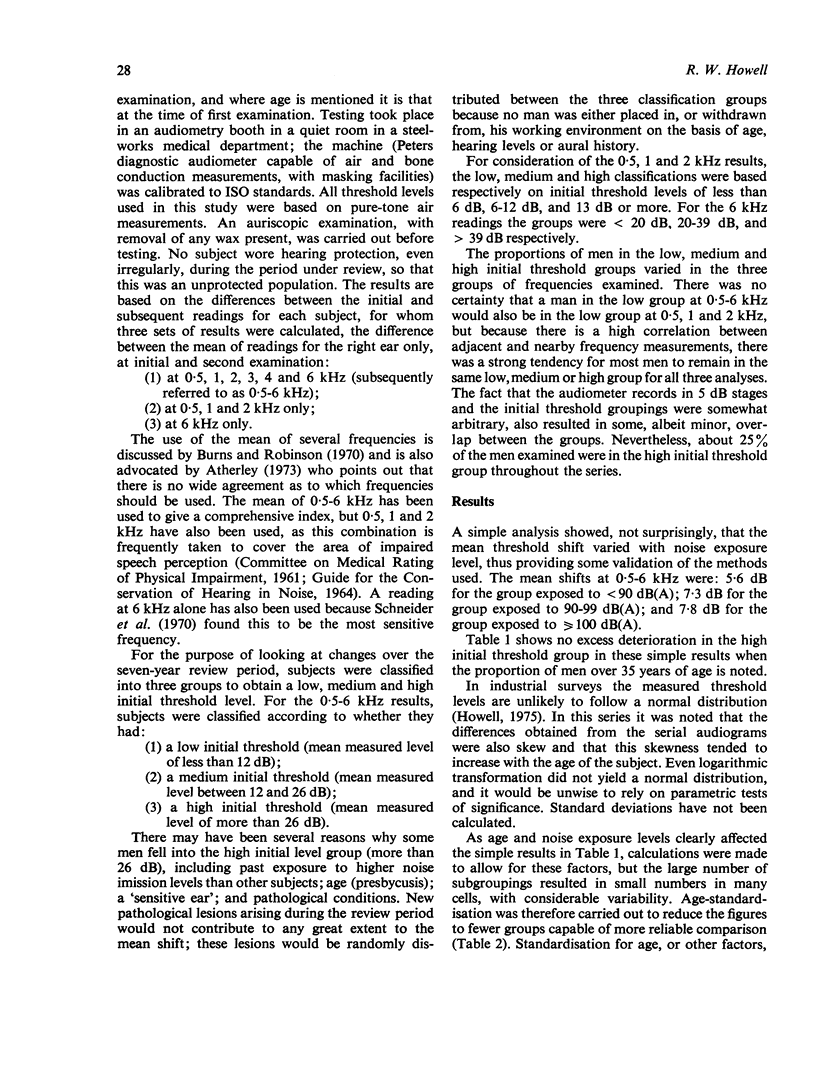
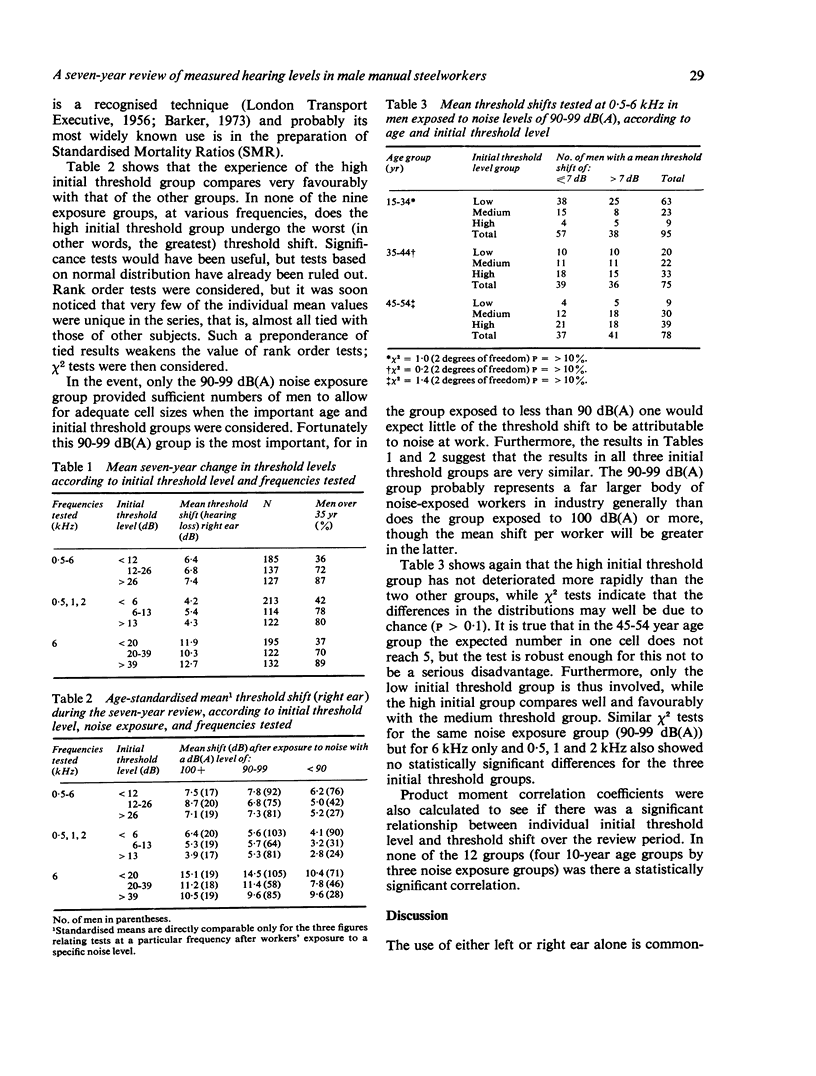
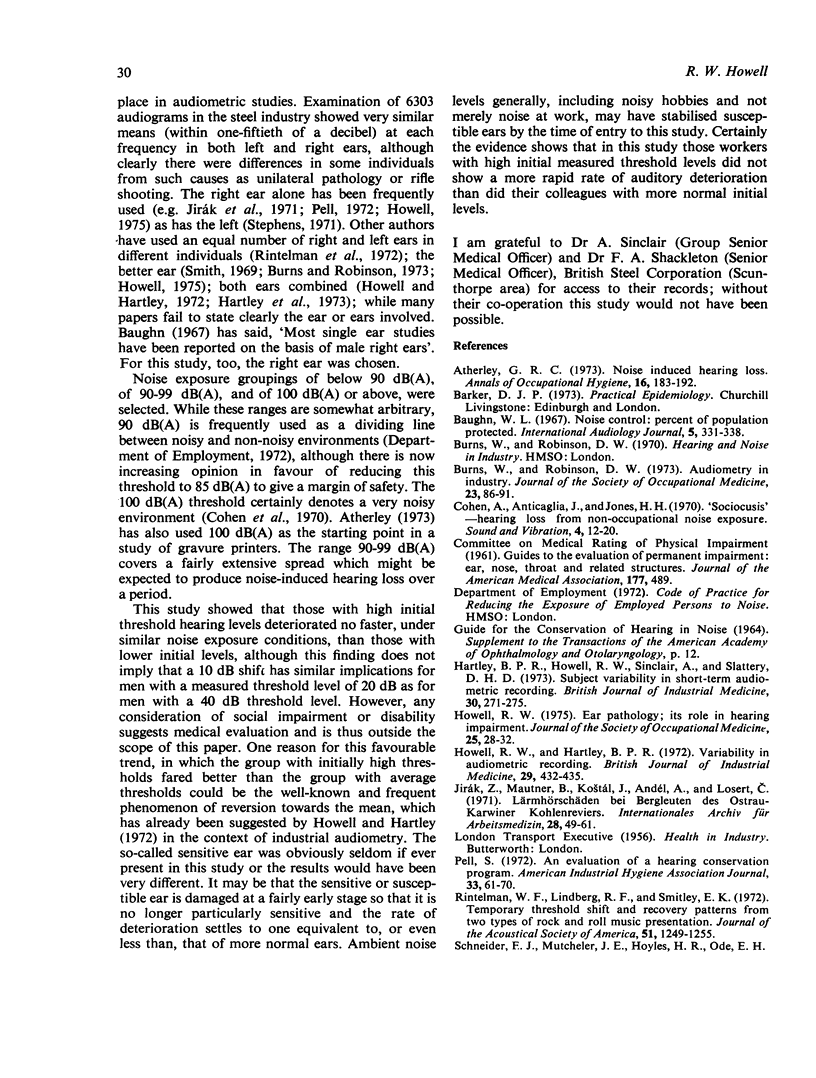
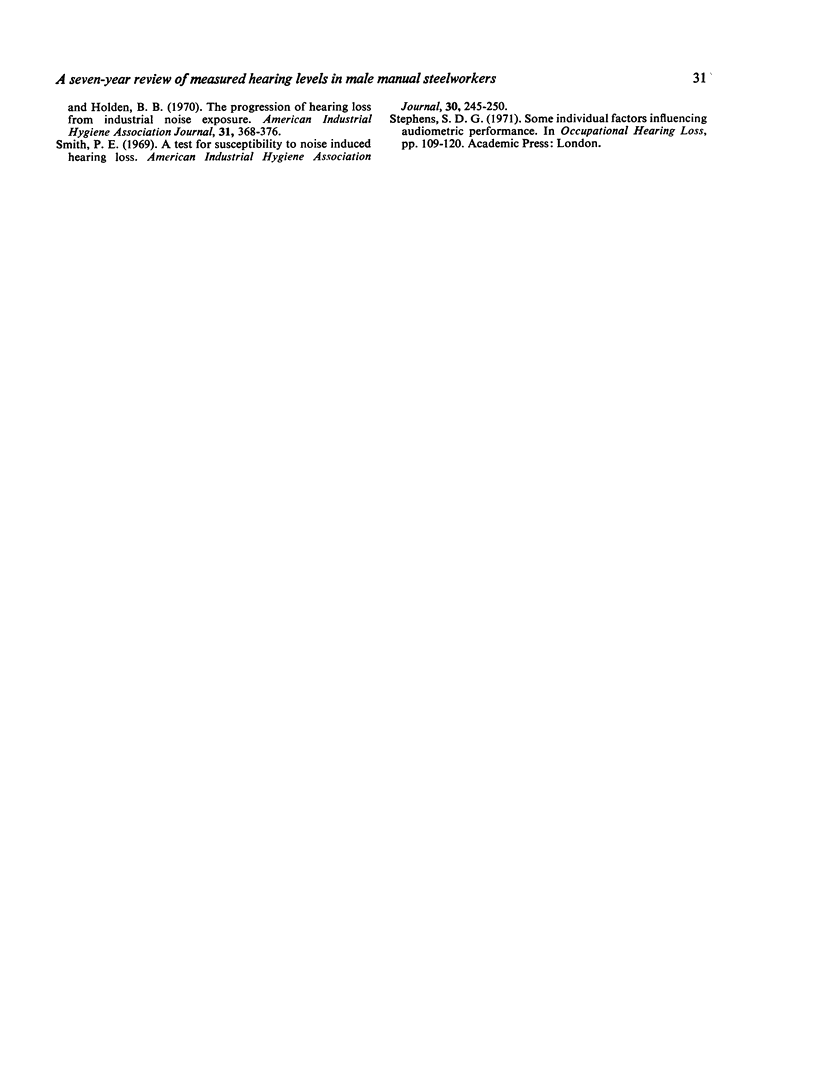
Selected References
These references are in PubMed. This may not be the complete list of references from this article.
- Atherley G. R. Noise-induced hearing loss: the energy principle for recurrent impact noise and noise exposure close to the recommended limits. Ann Occup Hyg. 1973 Aug;16(2):183–194. doi: 10.1093/annhyg/16.2.183. [DOI] [PubMed] [Google Scholar]
- Burns W., Robinson D. W. Audiometry in industry. J Soc Occup Med. 1973 Jul;23(3):86–91. doi: 10.1093/occmed/23.3.86. [DOI] [PubMed] [Google Scholar]
- Hartley B. P., Howell R. W., Sinclair A., Slattery D. A. Subject variability in short-term audiometric recording. Br J Ind Med. 1973 Jul;30(3):271–275. doi: 10.1136/oem.30.3.271. [DOI] [PMC free article] [PubMed] [Google Scholar]
- Howell R. W. Ear pathology: its role in hearing impairment. J Soc Occup Med. 1975 Jan;25(1):28–32. doi: 10.1093/occmed/25.1.28. [DOI] [PubMed] [Google Scholar]
- Howell R. W., Hartley B. P. Variability in audiometric recording. Br J Ind Med. 1972 Oct;29(4):432–435. doi: 10.1136/oem.29.4.432. [DOI] [PMC free article] [PubMed] [Google Scholar]
- Jirák Z., Mautner B., Kostál J., Andel A., Losert C. Lärmhörschäden bei Bergleuten des Ostrau-Karwiner Kohlenreviers. Int Arch Arbeitsmed. 1971;28(1):49–61. [PubMed] [Google Scholar]
- Rintelmann W. F., Lindberg R. F., Smitley E. K. Temporary threshold shift and recovery patterns from two types of rock and roll music presentation. J Acoust Soc Am. 1972 Apr;51(4):1249–1255. doi: 10.1121/1.1912968. [DOI] [PubMed] [Google Scholar]


